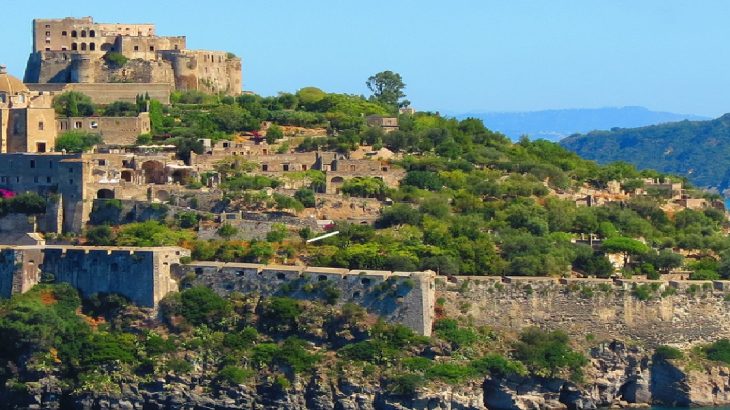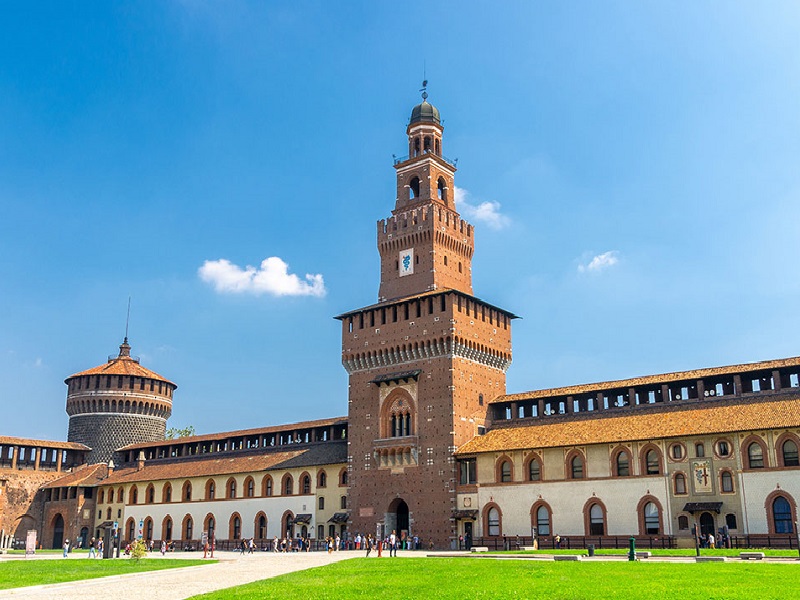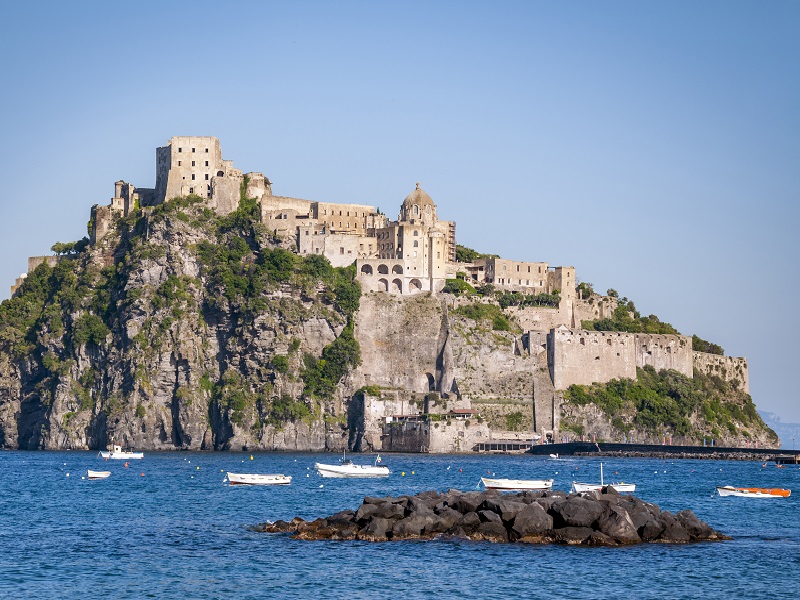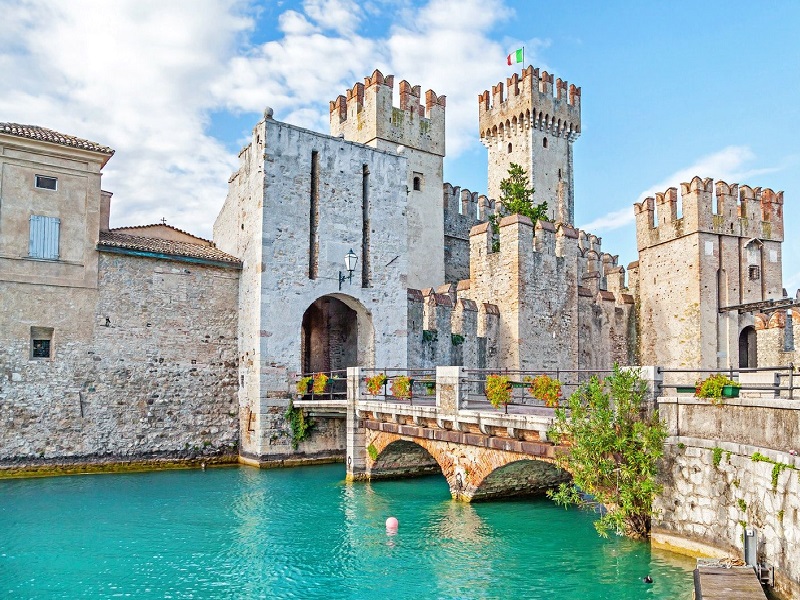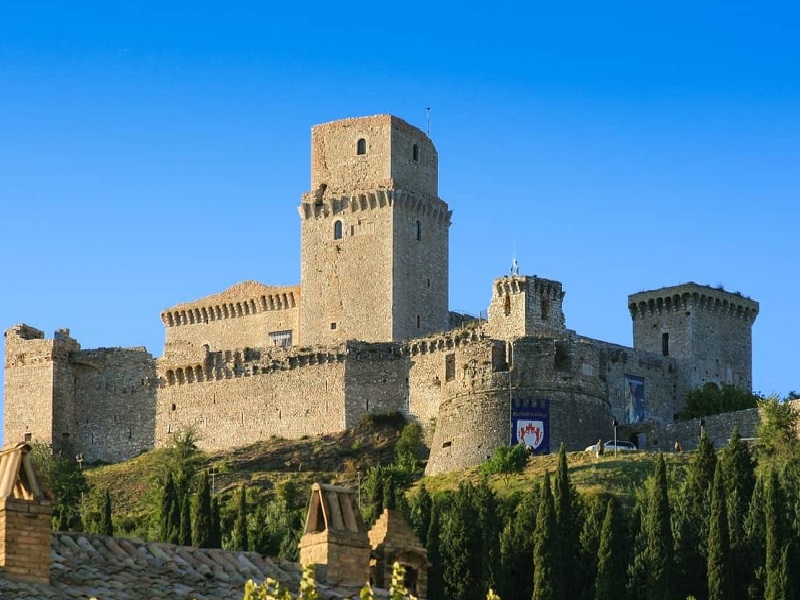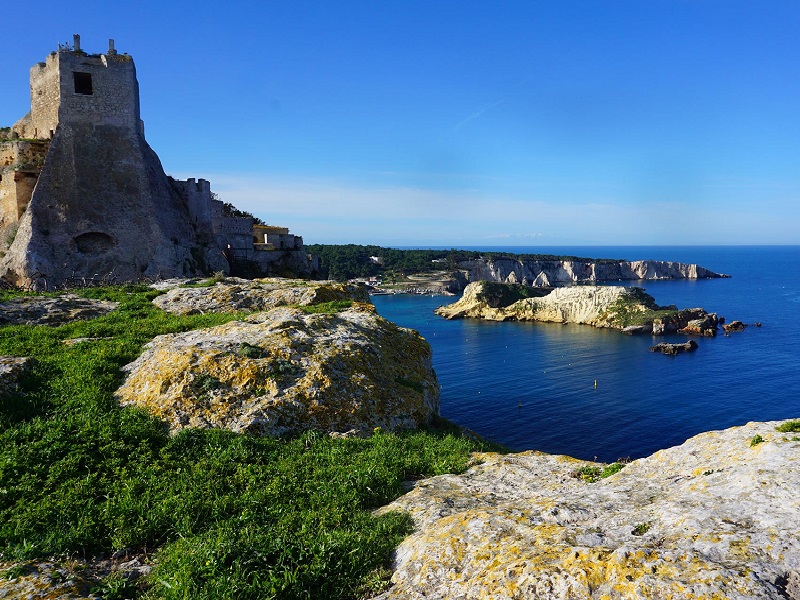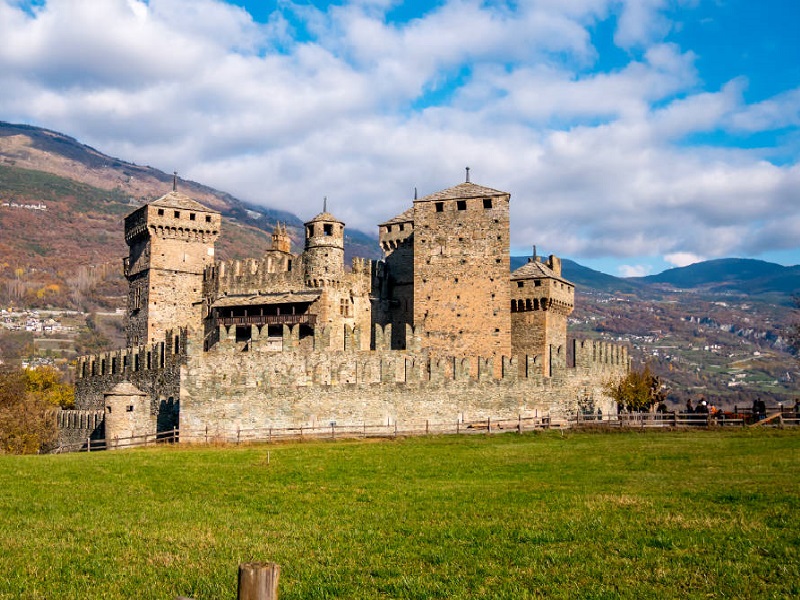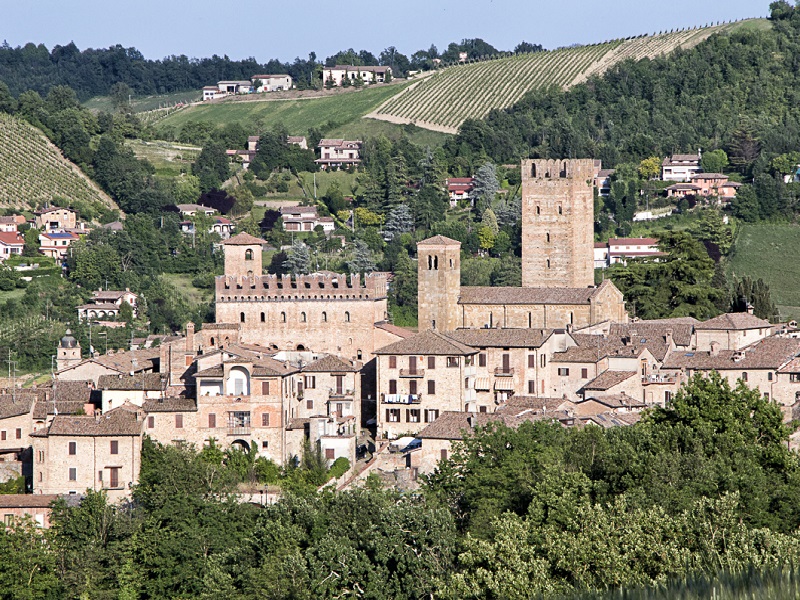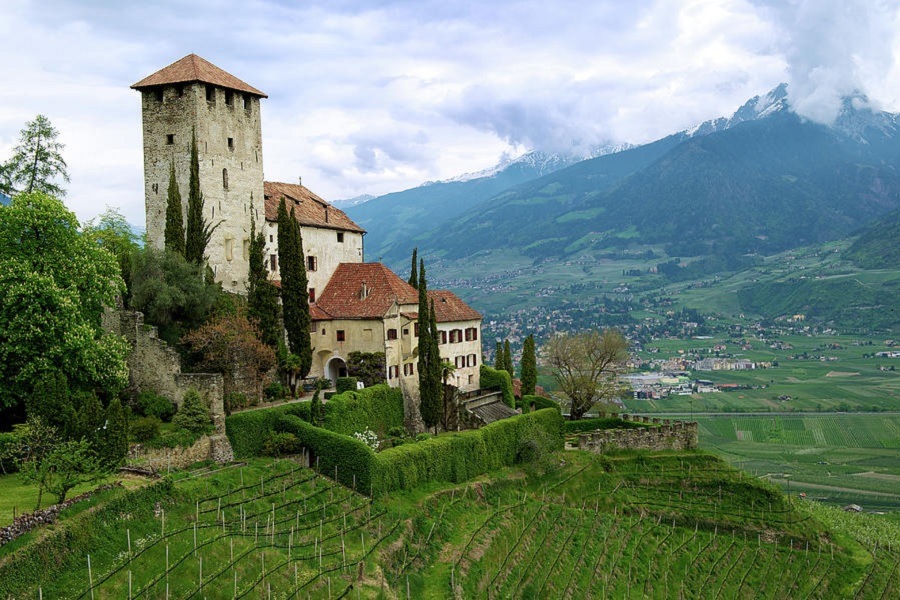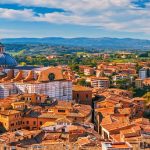Known for its art treasures, charming towns, spectacular landscapes, trendy fashion, passionate people, and amazing cuisine, Italy is one of the most popular tourist destinations in the world, and among the top places to visit in Europe. From the sparkling waters of the Tyrrhenian Sea to the fairytale setting of the Italian Alps and in between renowned Renaissance masterpieces, this is a place that has something to entice every kind of traveler. Besides, Italy appears to have more than 300 impressive, well-preserved castles that not only look fantastic in the Italian context but also in that of all of Europe. It can easily become a near-impossible task for a first-time visitor to locate the best castles in Italy. To help travellers unravel some of the land’s more intriguing and majestic sights, we have put together the list of the 10 most beautiful castles in Italy here.
Sforza Castle, Milan
Sforza Castle is a noteworthy and significant historic structure that sits at the heart of Milan, among the top places to visit in Italy. Built by the Duke of Milan, Francesco Sforza, in the 15th century on the remains of a 14th-century fortification and was built exclusively in 1891-1905 by Luca Beltrami. It is one of the largest citadels in Europe in medieval times. Today, the Renaissance castle is recognized as one of the most beautiful castles in Italy, and among the must-include places in Milan tour packages. Now, the castle is home to 9 museums dedicated to topics including ancient art, musical instruments, Egyptian antiques, applied arts, and more. The highlights of the museums are Michelangelo’s last sculpture and Leonardo da Vinci’s Codex Trivulzianus manuscript.
Aragonese Castle, Ischia
Sitting on a tiny volcanic island, Aragonese Castle is a historic structure connected to the island of Ischia by a 720-foot bridge. Overlooking the Gulf of Naples, it is one of the best castles in Italy to explore and certainly one of the most picturesque. The castle was built by Hiero I of Syracuse in 474 BC. In the mid-15th century, the islet was connected to Ischia with a stone bridge that replaced the previous wooden structure. On top of that Alfonso V of Aragon fortified the castle to defend the inhabitants from potential pirate raids. Later, the castle went through a tumultuous history before being sold to a private owner in 1912. Today the castle is the most visited monument on the island.
Sirmione Castle, Lake Garda
Sirmione Castle, also known as Scaligero Castle is a popular castle that was erected by the powerful Scaliger family, Located in the town of Sirmione on Lake Garda, Sirmione Castle, also known as Scaligero Castle is one of the stunning castles in Italy. Constructed in 1277 by the powerful Scaliger family, Sirmione Castle is an exquisite piece of medieval architecture, emphasized by its marvelous surroundings. A true Italian marvel, the castle is also known as the floating castle due to its location on Lake Garda. Historically it was the entry point and the center of the Sirmione community. The castle features all the classic elements of a middle ages fortress that includes drawbridges, moat, towers, wall-walk, and crenulations. The castle territory also incorporates a small harbor surrounded by ramparts where bowmen were positioned to protect both the fortification as well as the water inlets. There are 150 steps that lead up to the ramparts and the tower is open to the public for viewing. Scaligero Castle has long been an inspiration to artists and painters and one spot you can’t miss when visiting Lake Garda.
Castel dell’Ovo, Naples
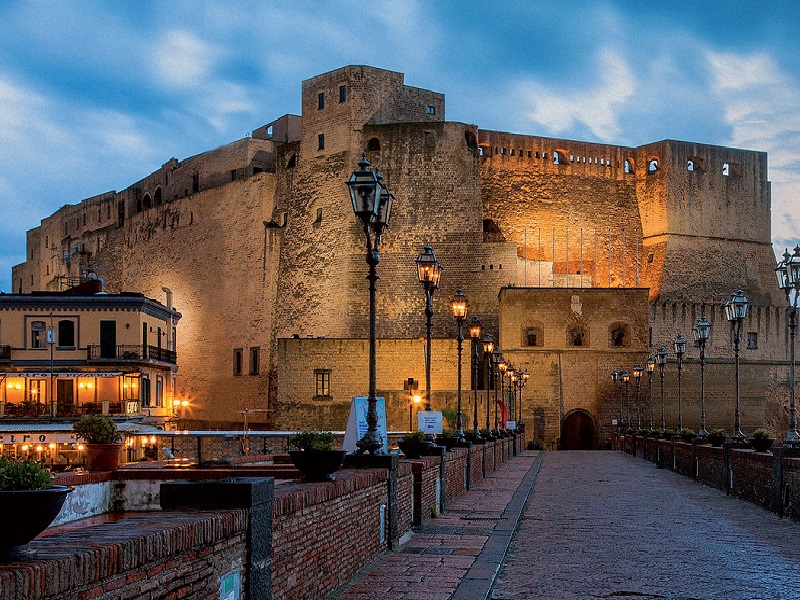
Located on the ancient island of Megaride, now a peninsula on the Gulf of Naples, Castel dell’Ovo is one of the most breathtaking castles in Italy you should definitely see when in Naples. Built by the Normans on the ruins of a Roman fortress during the 12th century, Castel dell’Ovo (Egg Castle) is the oldest standing fortification in Naples. Literally meaning the Egg Castle, the name of the castle refers to an episode in ancient history regarding a Roman poet named Virgil who is known as a great predictor and sorcerer in the Middle Ages. Virgil kept the magical egg in the foundations to support its bases, according to the legend. If this egg had been broken, the castle would have been damaged along with various disasters for Naples. This ancient fortress features a marina and plenty of restaurants at its foot. The best time to visit is around sunset when the light transforms the castle and the waters with its orange hues. From the top, one can get stunning views of the bay and Mount Vesuvius.
Castel Sant’Angelo, Rome
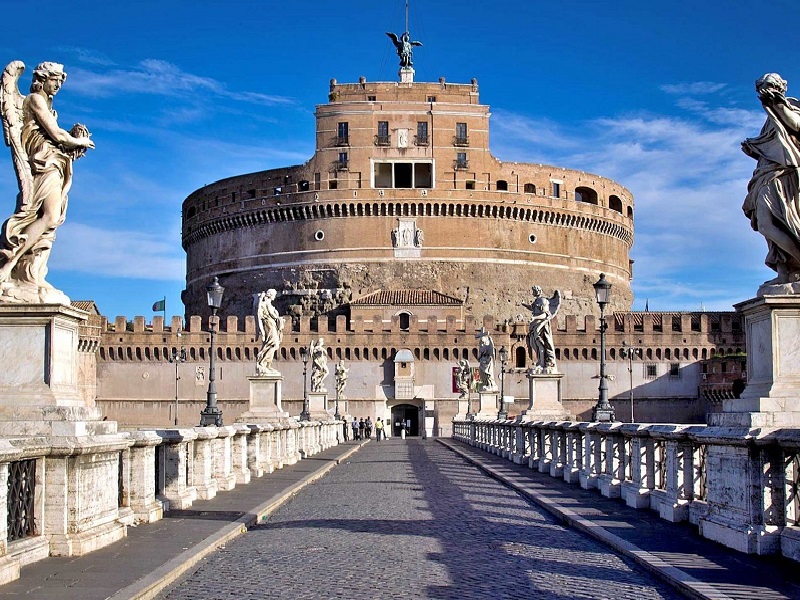
Our list of stunning castles in Italy cannot be complete without the mention of Castel Sant Angelo, Rome, one of the popular cultural destinations in Europe. Located in the Parco Adriano Park on the northern banks of Tiber, Castel Sant’Angelo is a fortress and a castle built between 123 and 139 AD. This cylindrical building was originally built as a mausoleum for the Roman Emperor Hadrian, and it has seen the birth, rise, growth, fall, and renaissance of the historic city of Rome in the past two millennia. Converted into a military fortress, it owes its name to a legend stating that Archangel Michael came into sight at the top of the castle to stop the plague that was ravaging Rome in 509 AD. Since the beginning of the 20th century, the castle has served as a museum and receives around 1 million visitors every year as part of Rome Tour Packages.
Rocca Maggiore, Assisi
Dating back to the 12th century Rocca, Maggiore is a gorgeous medieval castle located atop the hill of Assisi in the province of Perugia, Umbria region. It is a UNESCO World Heritage Site, and among the best castles in Italy to explore. The castle which was built in 1174 on the remains of a Roman fortress is an imposing bastion that looms over the hill town, intimidating potential invaders. Emperor Frederick II of Swabia owned it until the people of Assisi rebelled against him and destroyed the palace. Cardinal Albornoz rebuilt it in 1367. The castle of Rocca Maggiore dominates the entire skyline with its impressive battlements and it is quite popular with visiting tourists. Now, it might be a little bit of a ramble to get to the castle, but it’s well worth it for the stunning views of the Spoleto valley and the town of Assisi itself from the piazza located in front of the castle and can make for impressive photographs at sunset.
Fortress of San Nicola, Tremiti Islands
Fortress of San Nicola is a magnificent cliff-top castle located on the island of San Nicola di Tremiti, in the Adriatic Sea. It is the site of a monastery where a monk named Nicolò was buried. Legend has it that every time someone tried to move his corpse off the island, a violent storm would break out, preventing navigation around the island. With its tall and mighty white sandstone structure, the fortress and its surroundings provide a scenic outpost for travelers who love to indulge in photography. Despite dramatic cliffs and hilltop forts, the island is beneath the clear blue sea you’ll find their greatest assets, attracting over a hundred thousand diving and swimming enthusiasts each summer. The waters are part of a marine reserve, where you can explore underwater caves, sparkling grottoes, rock arches, and gorges, while surrounded by schools of colorful fish. Access to the castle is by boat from Puglia, Molise, Abruzzo or Le Marche.
Fenis Castle, Valle d’Aosta
Fénis Castle is a massive medieval fortress built between the 13th and 15th centuries by the Aymon of Challant in the Alpine Aosta Valley of Italy, one of the best European destinations for Indians. Bordering France and Switzerland to the north, the castle has numerous watchtowers, a double boundary wall with battlements, as well as towers in each corner of the pentagonal layout. It’s not just the exterior of the castle that inspires fascination with this unique structure, and an impressive mountainous landscape but the inner courtyard also is worth mentioning since it features a semi-circular stone staircase, wooden balconies, and a 15th-century fresco depicting Saint George dramatically killing a dragon. Converted into a museum, it’s home to weaponry, kitchen utensils, a chapel with frescoes, and many other medieval items. Along with admiring its architectural beauty, this mountainous region gives a lot of options for nature lovers to go for hikes and adventure sports in the Aosta Valley.
Castell’Arquato, Emilia-Romagna
Castell’Arquato is an Italian town located on the first hills of Val D’Arda in the province of Piacenza, in Emilia-Romagna. Featuring narrow, cobblestoned streets framed by rocky walls, a walk through this quaint 8th-century village will take you back in time. Besides, this medieval village is home to the stunning Visconti Castle that sits in the center of town. Built-in the 8th century, the imposing square towers of the Visconti castle dominate the Piazza del Municipio, and the castle now holds a museum of medieval life. Be sure to climb the 14th-century tower in the castle (Rocca Viscontea) for the impressive views of the village and the patchwork of fields and trees in the region around the town. Besides the castle, the church of Saint-Mary and the Torrione Farnese (bell tower) are also worth visit. Another asset of the village is that it’s located near the Piacenza Hills, a region famous for its excellent wines. It’s a great place to sample locally produced Gutturnio and Monterosso Val d’Arda wines.
Tyrol Castle
Tyrol Castle, less commonly Tirol Castle (Italian: Castel Tirolo) is a medieval castle located in South Tyrol, Italy. It was the ancestral seat of the Counts of Tyrol and gave the whole Tyrol region its name. The castle was constructed in different phases and has thus acquired its current appearance over nine centuries. The first phase of the building complex took place in the early 12th century and expansion took place at least until the 14th century. Some of the most decisive alterations were carried out in the 19th and 20th centuries. Nowadays, the family seat of the Lords of Tyrol hosts the South Tyrolean Cultural History Museum. Visitors can see Romanesque portals which were carved by stonemasons from Lombardy, the medieval double chapel, the magnificent Knights’ Hall which was used for celebrations and symbolic occasions, the dungeon in the Keep, and the paneled Refectory here. Countless exhibits provide insight into the life and the cultural and regional history of Tyrol from the earliest times to the present. Besides, the castle boasts impressive views of the surrounding Adige Valley and into the Val Venosta.
